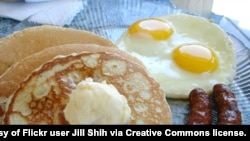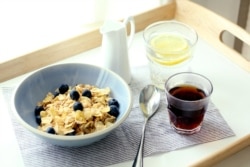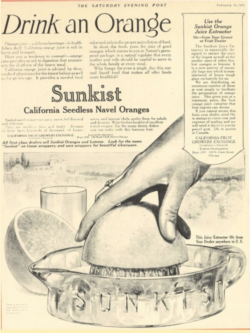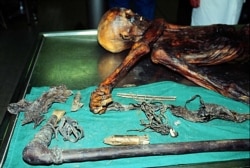From the earliest days of the republic, Americans broke their fast in the morning by eating whatever was most easily available, which often included bread, eggs or leftovers.
Convenience is still a driving factor when it comes to breakfast, but what is eaten has evolved over time. The habit of consuming certain foods for breakfast, such as cereal, is the result of extraordinarily effective marketing.
“Advertising was practically invented to sell cereal,” says Heather Arndt Anderson, the author of "Breakfast: A History."
“One of the first ways advertising was successfully or effectively used was to convince mothers that it was OK for their children to eat these instant cereals. It sort of offered working mothers a chance to let kids take care of themselves in the morning.”
As women entered the workforce to help support their families, cereal was a food kids could take care of on their own without having to do anything dangerous like light a stove.
“That's still sort of the power, really the lasting effect of breakfast as being the first meal that kids do learn how to prepare themselves,” Arndt Anderson says. “Even today, even though there are so many other instant foods or foods that do not require cooking, I know it's the first thing I learned how to make when I was a kid.”
Advertising also played a key role in orange juice becoming a morning beverage. In 1916, a surplus of oranges gave birth to the advertising slogan, “Drink an orange,” which aimed to convince people that juicing an orange (or a few oranges) was a healthy way to start the day. Two years later, a worldwide flu epidemic prompted consumers to drink more orange juice for its health benefits.
Coffee might have the 1773 Boston Tea Party to thank for its U.S. popularity. After the colonists protested British taxation by dumping tea into Boston Harbor, some made a point of shunning tea and turning to coffee instead.
In a 1774 letter to his wife, Founding Father John Adams wrote, “I have drank Coffee every Afternoon since, and have borne it very well. Tea must be universally renounced.”
By the 1830s, coffee was already such a staple that pioneers traveling to the American West made sure to pack coffee beans to have along on the journey.
Pancakes have also been around practically forever. Researchers believe the world's oldest naturally preserved human mummy ate a pancake-like food as one of his last meals.
Historians think it’s possible hotcakes were relegated to the morning because they are much quicker to prepare than bread. That left cooks with plenty of time to bake fresh loaves in time for dinner.
In addition to pancakes, U.S. households still consume other breakfast foods — like bread and eggs — that their ancestors did. Not only have those breakfast basics remained the same, but so also have people’s concerns about healthy food options.
“Before, it wasn’t like people were worried about the gluten content of bread, but they were worried about whether or not … a hot, steamy buttery roll would be too rich for the body,” says Arndt Anderson. “This idea of clean eating and healthy eating is a centuries-old construct, and the only thing that’s changed has been the details with which we define what these things are — what clean eating is, and being healthy.”
Looking toward the future, Arndt Anderson hopes more Americans will view leftovers as a breakfast food, which in addition to being tasty, is a great way to minimize waste.
(Main photo above courtesy of Flickr user Jill Shih via Creative Commons license.)









